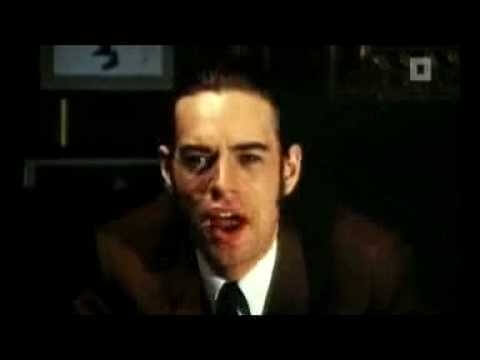R.I.P. Nicolas Roeg, director of Don't Look Now and The Man Who Fell To Earth

Nicolas Roeg, the British filmmaker whose penchant for disturbing imagery—and working with rock stars with a taste for the otherworldly and strange—earned him outsider acclaim for films ranging from David Bowie’s The Man Who Fell To Earth to the Roald Dahl adaptation The Witches, has died. Per Variety, Roeg was 90.
A film-making veteran long before he ever stepped into the director’s chair, Roeg worked first as a film office worker and clapper boy before embarking on a long career as a camera operator and eventual cinematographer, getting his big break in 1962, when David Lean hired him as a second unit photographer on Lawrence Of Arabia. Lean would also hire—and then fire, reportedly over clashing creative visions, which, in hindsight, makes sense—Roeg for his follow-up, Doctor Zhivago, but by that time he was already an in-demand and well-respected director of photography, working with the likes of Roger Corman (The Masque Of The Red Death), Richard Lester (A Funny Thing Happened On The Way To The Forum), and François Truffaut (Fahrenheit 451).
In 1970, Roeg co-directed (with writer Donald Cammell) his first feature, Performance, which set something of a template for his future offerings. Which is to say that it’s moody, obsessed with issues of identity and obsession, features a major rock star (Mick Jagger) in a lead role, and critics at the time didn’t know what the fuck to make of it. The story of a tough London gangster (James Fox) hiding out with a trio of Bohemian artists (including Jagger, Michèle Breton, and model/artist Anita Pallenberg, whose sex scenes with Jagger were rumored to sit, uh, poorly with long-time lover Keith Richards), the film begins as a hard-boiled crime thriller, but slowly evolves into something much stranger, venturing into psychedelia, homoeroticism, and deep sexual introspection. Needless to say, later audiences fell in love with it, elevating it to cult film status in the early ’80s, while several of its sequences presage the rise of the modern music video.
Roeg followed Performance with his first solo directing effort, 1971's Walkabout, a sort of hybrid coming-of-age/nature documentary/survival/romance film that is, in case it wasn’t clear, the sort of movie that defies easy description. The film stars Jenny Agutter and Roeg’s son, Luc, as a pair of children stranded in the beautiful but hostile Australian outback when their father suddenly goes insane. Dying of thirst and exposure, the pair are saved by a native Australian boy (David Gulpilil) who teaches them how to survive, despite the communication barriers between them. Ever the cinematographer, Roeg’s camera switches—often with distressing speed—between shots of the landscapes and wildlife of the Australian plains, the brewing connection between the youths, and the markers of violence and civilization threatening to drag them apart. The film is held up as one of the early masterpieces of Roeg’s career, marrying his skill with the camera—he served as his own DP—with narrative subtlety and introspection about the way all beautiful things fall apart.
If it sounds like we’re struggling here to encapsulate Roeg’s early work in a few simple sentences, take it as a sign of how meaty and complicated the movies he was making in the 1970s were; it feels like a disservice to gloss over the dreamy psychology of Don’t Look Now—far more broody and unsettling than its infamously shocking ending might suggest—or to treat 1976's fable The Man Who Fell To Earth as merely the first of many vehicles for David Bowie’s occasional acting career. Roeg made disorienting films about disoriented people, often bludgeoning his audiences with sudden shifts of frame or juxtapositions of vastly different images. (Or to quote a possibly apocryphal film executive who reportedly hated his 1980 thriller Bad Timing, which features Art Garfunkel as a sexually obsessive psychiatrist: “A sick film made by sick people for sick people.”) Few directors can stack up a 10-year run of films as ambitious, bewildering, or assured in both their style and subject matters, and while critics and audiences at the time struggled with them, numerous modern masters, including Steven Soderbergh, Ridley Scott, Danny Boyle, and Christopher Nolan, have cited Roeg as a key influence on their styles.
Roeg’s career cooled in the 1980s; although he continued to work steadily—directing films like Eureka, Castaway, and Insignificance—his signature style had begun to feel less fresh, and more dated, as time went on. He was still capable of flashes of brilliance, though. His 1990 children’s movie The Witches, for instance, is classic childhood nightmare fuel for fans of the Roald Dahl book, with Roeg refusing to pull punches when showing off just how evil the novel’s titular monsters could be.
Throughout his 60-plus year career in making movies, Nicolas Roeg never lost sight of the awe-inspiring power of the camera. He dazzled with it; he outraged with it; he warmed, shocked, and titillated with it in sometimes equal measure. At times, his movies are as much art-world visual mosaics as they are narrative structures. Frustrating and fascinating, they always carried one unifying trait, though: They didn’t look like they could have been shot by anybody else.